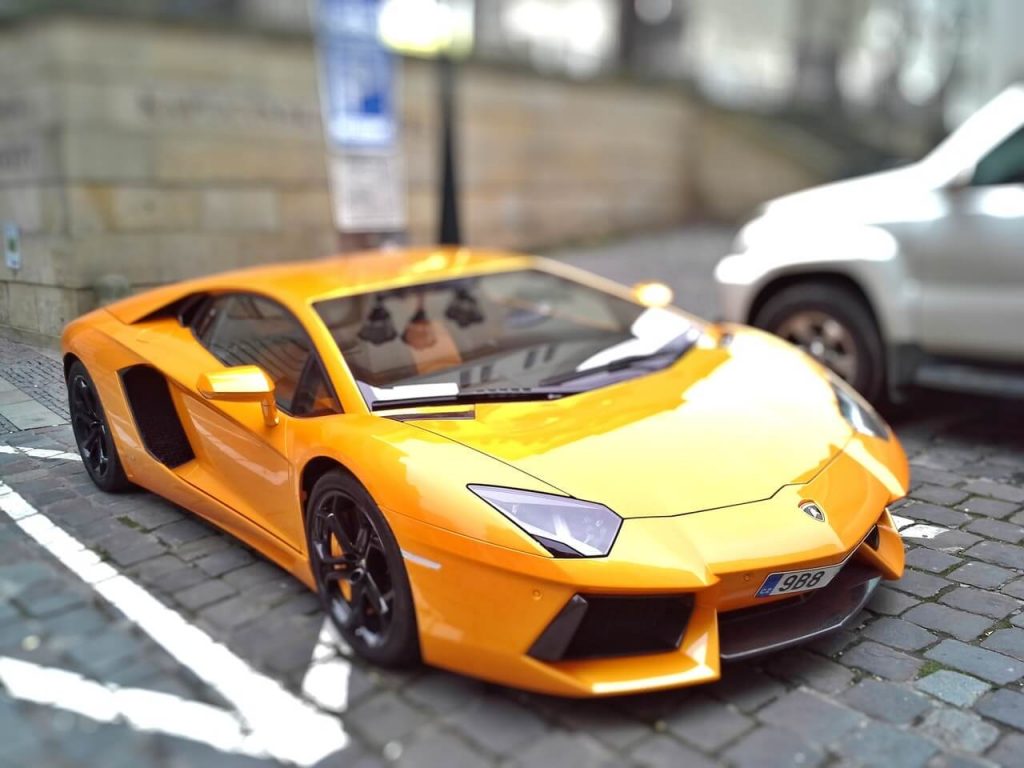In this article, we will talk about the best German race cars. German race cars are known for their quality and creative designs.
In the world of motorsports of all kinds, the German industry has a group of models that it is proud of due to its distinguished achievements.
A list of the best German race cars
Audi Quattro
In 1979, Audi asked FISA for permission to compete in international rally events with a four-wheel drive vehicle. The request raised more than a few eyebrows because, at the time, most racing cars used rear-wheel drive, but FISA ended up approving it nonetheless. It one of the best German race cars in the world.
Initially, the Audi quattro all-wheel drive racer was remarkably close to the regular coupe on which he was based. However, the Quattro became increasingly powerful over the course of the 1980s, and Audi introduced a short-wheelbase version of it in 1985 that was much smarter to drive. Quattro regularly finished first in rally events during the 1980s but his development was abruptly halted when Group B was scrapped at the end of the 1986 season.
Audi R18
This is a great German race car. The Audi R18 is indisputably one of the most successful racing cars of the 21st century. Introduced in 2011 as the R18 TDI, the car features an innovative turbocharged engine that generates more than 530 horsepower thanks to features such as a V-engine. Compared to other cars, this one is among the best German race cars.
The R18 TDI evolved into the R18 Ultra in 2012 and then into the R18 e-tron quattro in 2013. The latter car is still raced today, and has an advanced diesel-electric hybrid engine consisting of a flywheel accumulator system, two alternators driving the front wheels and a powerful turbocharged engine . The high-tech R18 has taken first place in the LMP1 24 Hours of Le Mans class every year since its debut in 2011.
BMW 3.0CSL
Perhaps inspired by the success of 2002, BMW decided to hit the track with its larger 3.0CS Coupe in 1972. The specification model, called the 3.0CSL, weighs less than its regular production counterpart thanks to thinner steel, a complete absence of soundproofing materials and alloy body panels Aluminium. In terms of performance, it is one of the best German race cars.
Later versions of the car were nicknamed the Batmobile because it was sold with an aggressive body kit that produced extra downforce at high speeds. The 3.0CSL engine took first place in the European Car Championship in 1973 and again every year between 1975 and 1979, cementing BMW’s position as a premium automaker capable of holding its own on and off the track.
BMW M3 (E30)
BMW’s M division created the original E30-based M3 by crafting a powerful engine into a compact and lightweight body, the same time-tested recipe that a long list of automakers have used over the years. The special teams immediately recognized the potential of the M3 and wasted no time in turning the sports sedan into a complete track beast.
Over the course of its career, the E30 M3 competed in the World Touring Car Championship, the German, British, French, Italian and Australian car championships as well as numerous World Rally Championship events in the late 1980s. To date, it remains one of the most successful racing cars BMW has ever made and the M3 that has scored the most track time.
Mercedes-Benz 300 SLR
Although it looked like the iconic Gullwing-bodied 300 SL, the Mercedes-Benz 300 SLR was essentially a fully-inflated Formula 1 car with a sleek coupe body. Power came from the 3.0-liter evolution of the W196’s 2.5-liter fuel-injected eight-cylinder engine tuned to produce 310 horsepower.
Led by famous pilots like Stirling Moss and Juan Manuel Fangio, the SLR 300 took off on a very successful start and took first place in challenging events like Mille Miglia and Targa Florio. However, it was prematurely pushed into retirement when Mercedes canceled the racing program altogether after a disastrous accident during the 1955 24 Hours of Le Mans.
Mercedes-Benz 300 SEL “Red Pig”
In the early 1970s, a small German tuner called AMG ambitiously decided to build a heavily modified Mercedes-Benz 300 SEL capable of beating smaller cars like the Alfa Romeo GTA and Ford Capri around the racetrack. In the days when the “S65” was little more than a postal code in England, many thought the AMG target was insane and impossible to reach.
AMG has equipped the giant truck with a 6.8-liter V8 with 450 horsepower derived from a 6.3-liter eight-cylinder engine that powers the 600 limousine, more powerful brakes and a revised suspension system. The 300 SEL, instantly nicknamed the Red Pig, competed in the 1971 24 Hours of Spa. It had to stop often because it burned an annoying amount of gasoline and go through several sets of tires due to its cargo ship-like weight, but nonetheless managed of taking second place in this event.
Opel Ascona B 400
The Opel Ascona B 400 was one of the few racing cars that could keep up with the aforementioned Audi Quattro in the early 1980s. Based on the second generation Ascona, the racer was powered by a 2.4-liter four-cylinder engine that sent more than 240 horsepower to the rear wheels only.
The Ascona B 400 took first place in the Swedish International Rally, the Monte Carlo Rally, the Rally Côte d’Ivoire and the Marlborough Safari Rally. In addition, Walter Ruhrl won the World Rally Championship driver title in 1982 behind the wheel of Ascona, the last time a rear-wheel drive car won the title.
Porsche 550 Spyder
Largely aimed at private racing cars, the Porsche 550 Spyder was powered by a 1.5-liter, air-cooled flat-four engine that produced 110 horsepower in its initial state. That’s not much on paper but it was a pretty cool statistic at the time, especially considering the Spyder weighed just over 1,500 pounds. The impressive power-to-weight ratio allowed the convertible to easily overcome much larger competitors.
Early in her racing career, the 550 mostly competed in small and medium sized events held in Europe. However, she quickly moved to international events, making headlines when she finished first in the 1956 Targa Florio, giving Porsche its first-ever victory in a major sporting event.
Porsche 917
The 917 was designed to compete in a new class of the FIA World Sports Car Championship. Built largely from lightweight materials such as fiberglass and aluminium, the Racer was initially powered by a 4.5-liter flat 12 engine that produced 520 horsepower.
The first cars at high speeds were difficult to control and many pilots refused to drive them. Porsche successfully overcame the kinks in time for the 1970 season and turned the 917 into one of the most successful race cars ever in Stuttgart, allowing Porsche to take first place in the International Mixture Championship in 1970 and 1971. Shortly by the FIA, but it continued Raced in the Canadian-American Challenge Cup (Can-Am) until the 1970s.
Porsche 953
By the 1980s, everyone in the automobile industry knew that Porsche was a force to be reckoned with on the track. Eager to take on a new challenge, the company surprised its competitors when it announced its plans to participate in the Paris-Dakar with a 911.
Porsche was no stranger to rallying, the company’s cars had competed successfully in events like the Monte Carlo Rally for decades, but the Paris-Dakar was a stressful event even for purpose-built off-road drivers like the Land Rover Range Rover. Porsche prepared for the event by building a heavily modified 911 fitted with a 300-hp flat-top engine, remarkably raised suspension, top-tier tires and an experimental all-wheel drive meticulously showcasing the technology that will be introduced on the next year’s 959.
The 953 took first place in 1984 Paris-Dakar. Its success was short-lived, and it was replaced by the 959 the following year.
Hot Cars, a car news website, revealed the most successful German-made cars in the racing world, which have previously won prestigious titles in rally races and other competitions.
At the forefront of the list was the Audi Quattro model, which was introduced in the eighties of the last century, and previously won the World Rally Championship title.
The list included the Porsche 919 Evo, which won the Le Mans 24 Hours of Hybrid races, competition titles in 2015, 2016 and 2017.
Among the list was the classic BMW model, BMW M3 E30 Group A, which was one of the cars that held the title of the famous Rally Group A race, in addition to a number of other car racing titles that it succeeded in achieving, including the Italian Touring Car Championships, which won its title for a period of 4 years.
Also from Audi, the list included the Audi R10 TDI, which had previously won the Le Mans 24 Hours title on 3 consecutive occasions, and was powered by a supercharged V12 engine that produced 630 horsepower and a capacity of 5.5 liters.
Among the Porsche models, the Porsche 959 Dakar, which won many distinguished titles in the eighties of the last century, in various rally races, was powered by an engine that produces 444 horsepower. Porsche is belongs to the top German race cars.
From Mercedes, the list included the Mercedes-AMG F1 W05 Hybrid, which won the title of hybrid car racing in Formula 1, in 2014, and was powered by a turbocharged 1.6-liter V6 class.
The site closed the list with the BMW-Williams FW26, which won the F1 title in the 2004 season, and was powered by a 3-liter V10 engine.
When your country is linked by a highway network with no speed limit, the cars you make have to be pretty special. German sports cars prove that engineering a vehicle for life on the Autobahn can have a magical effect, no matter where you call home.
BMW, Mercedes-Benz, Porsche, and Audi all vie for the hearts and minds of driving enthusiasts who favor sharp handling and strong engines, without sacrificing ride comfort, safety, or the latest in technology. From the legendary Porsche 911, to the recently returned BMW 8 Series, the best German sports machines don’t sacrifice everyday usability in the name of headline-grabbing specs.
In this article, we talked about the best German race cars. We’ve compiled a list of the models that stand out most of all, ranked on their overall performance and the sheer driving pleasure each one provides. The best part is that none of these cars delivers anything close to a dull experience, each has plenty of great attributes (though some shine brighter than others). Keep reading to see which German sports car ranks above the rest when it comes to pure performance.


